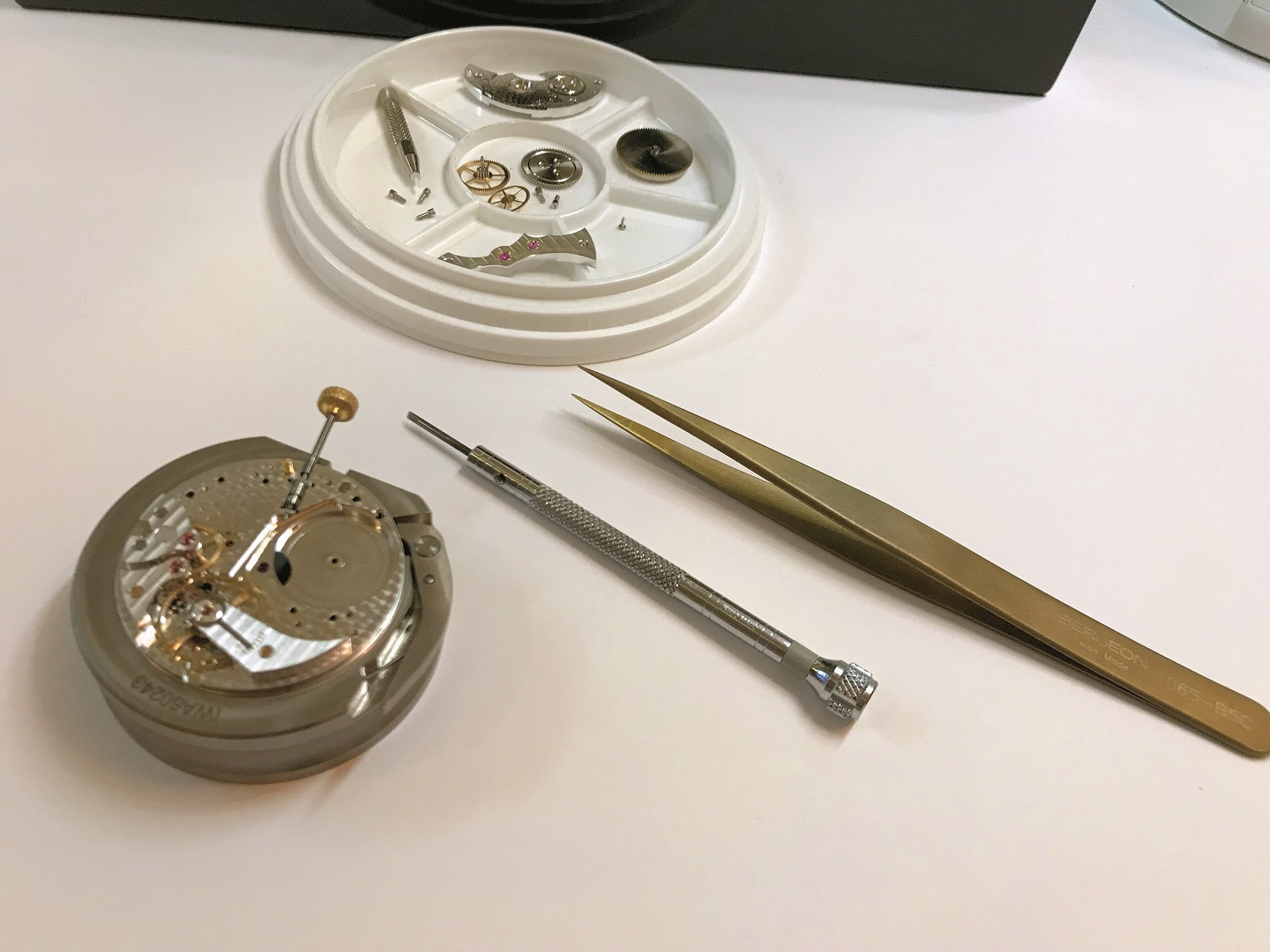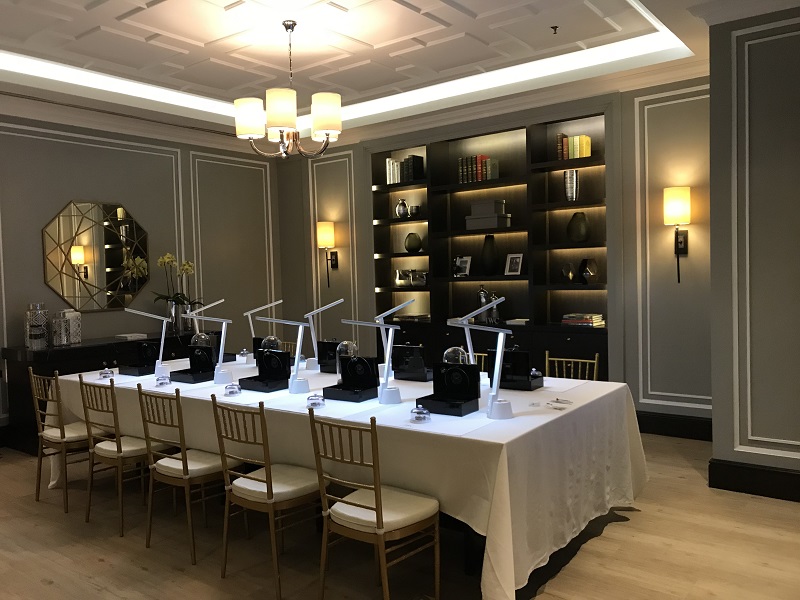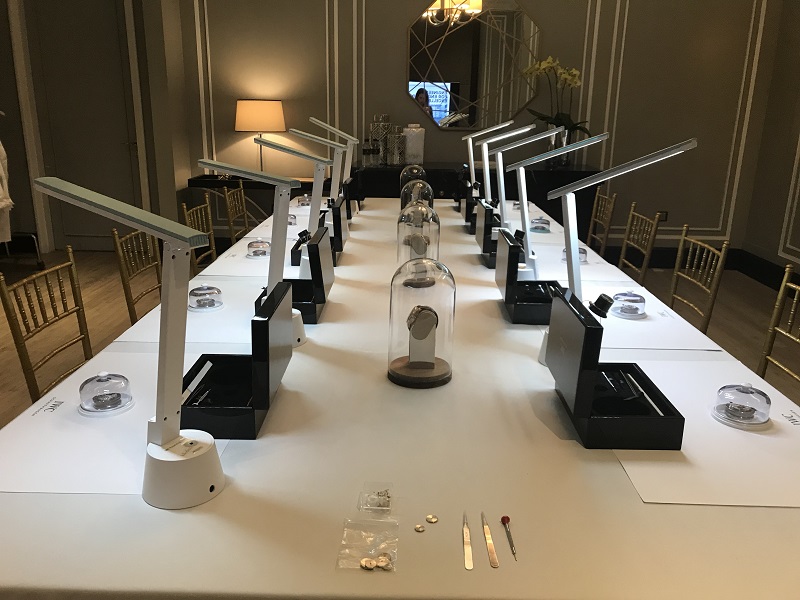
The movement is semi-stripped during the disassembling process, with parts carefully separated in a holder for safekeeping.
We wear entire universes on our wrists but few of us have had the good fortune to explore the mechanisms that keep them ticking. And while skilled supervision and the right set of tools are integral to such an endeavour, a degree in physics is not a prerequisite for enthusiasts who want a look beneath the crystal dial.
Founded in 1868 by American watchmaking pioneer Florentine Ariosto Jones, IWC Schaffhausen developed a reputation for exemplary mechanical movements, credited to its Swiss watchmaking expertise, technology and hydropower sourced from the nearby River Rhine. Its first movement was the eponymous Jones calibre, and we were allowed to tinker with a tweaked model at a recent watchmaking masterclass hosted by IWC at The Ritz-Carlton, Kuala Lumpur.
In the hands of Howard Sew, senior watchmaker for IWC Southeast Asia, a small group of writers donned lightweight lab coats and sat at desks equipped with work lamps to learn how to disassemble and assemble a movement. Both processes are necessary for a session to hold the title of masterclass. On the tables, exposed calibres were paired with toolkits comprising tweezers, a small slot-head screwdriver, a leather buff and a watchmaker’s loupe.
Movements are not meant to be handled by hand — I earned a muffled shriek from Sew when I absent-mindedly reached for a bridge with my fingers. They are highly polished and their tiny components so fragile that clumsy handling runs the risk of smudging or breakage. Within the small house of a case, components are closely juxtaposed or stacked upon each other, and fine instruments are needed to avoid interfering with neighbouring parts or adorning jewels. The tweezers in our kit — atypically long with ends tapering into fine points — did much of the heavy lifting.

The calibre is set into a case holder, a platform that locks it down for ease of working upon. It was still ticking, so first on the agenda was halting the movement before it is disassembled. Mainsprings, which transmit energy to the wheels, have to be handled cautiously as stored energy or dangerous residual tension, even in their paused state, can cause serious injury. Sew removed a mainspring to show us how extraordinarily long it is before demonstrating how a stopper is used to halt the movement.
It is harder than it looks — the stopper has a slender point that has to be inserted into a tiny hole by the ratchet wheel, which coils the mainspring. We had to interrupt the rotation of the ratchet wheel by deftly pushing back the click spring, which places tension on the ratchet wheel to create power, so the stopper could be inserted and stop the wheel turning. The movement used up all remaining stored energy before coming to a halt. Some found this exercise easier than others as it requires impeccable timing and precision.
We then tackled disassembling the movement. The minefield of screws we had to manoeuvre through was made easier by clever mapping, silver marking the screws we were meant to remove and gold those we shouldn’t. Even use of the screwdriver required a brief lesson in correct technique, which saw us press down on the top with the index finger and use the thumb and third finger to turn the shaft, the entire affair done with one hand. We started by removing the screw holding down the ratchet and using tweezers to guide the ratchet wheel out of its snug home.

Here we began to appreciate just how tricky working with watch components can be. There seems to be an optimal amount of force ideal for manipulating the parts; too little and they may not budge but too much and they threaten to break. The same process was repeated across the barrel bridge and barrel, before we were set the task of reversing the process and reassembling the movement.
The overall exercise was simple but the devil truly was in the details. Manoeuvring the wheels especially had to be done with great care. They had to be lifted out evenly or would tilt and risk getting caught in other components, and their spokes increased the fragility of their structures. Sure, fluid actions ease the manipulation of parts and this certainly comes with practice, evinced by Sew’s almost careless dexterity in handling them.
While tinkering with the components was great fun, it also allowed for a close-up view otherwise rarely afforded. The hallmarks of a luxury watchmaker were on breathtaking display, from high quality finishing and precise engraving to the decorative Côtes de Genève or Geneva stripes on the bridges that catch the light. This was just a basic movement too, hinting at the sheer visual beauty and technical mastery of IWC’s greater complications. Our masterclass offered just a peep into the anatomy of a timepiece, but even that was sufficient to marvel at the expertise and resources that power the illustrious brand and inform its mechanical wonders.
This article first appeared on Mar 19, 2018 in The Edge Malaysia.


